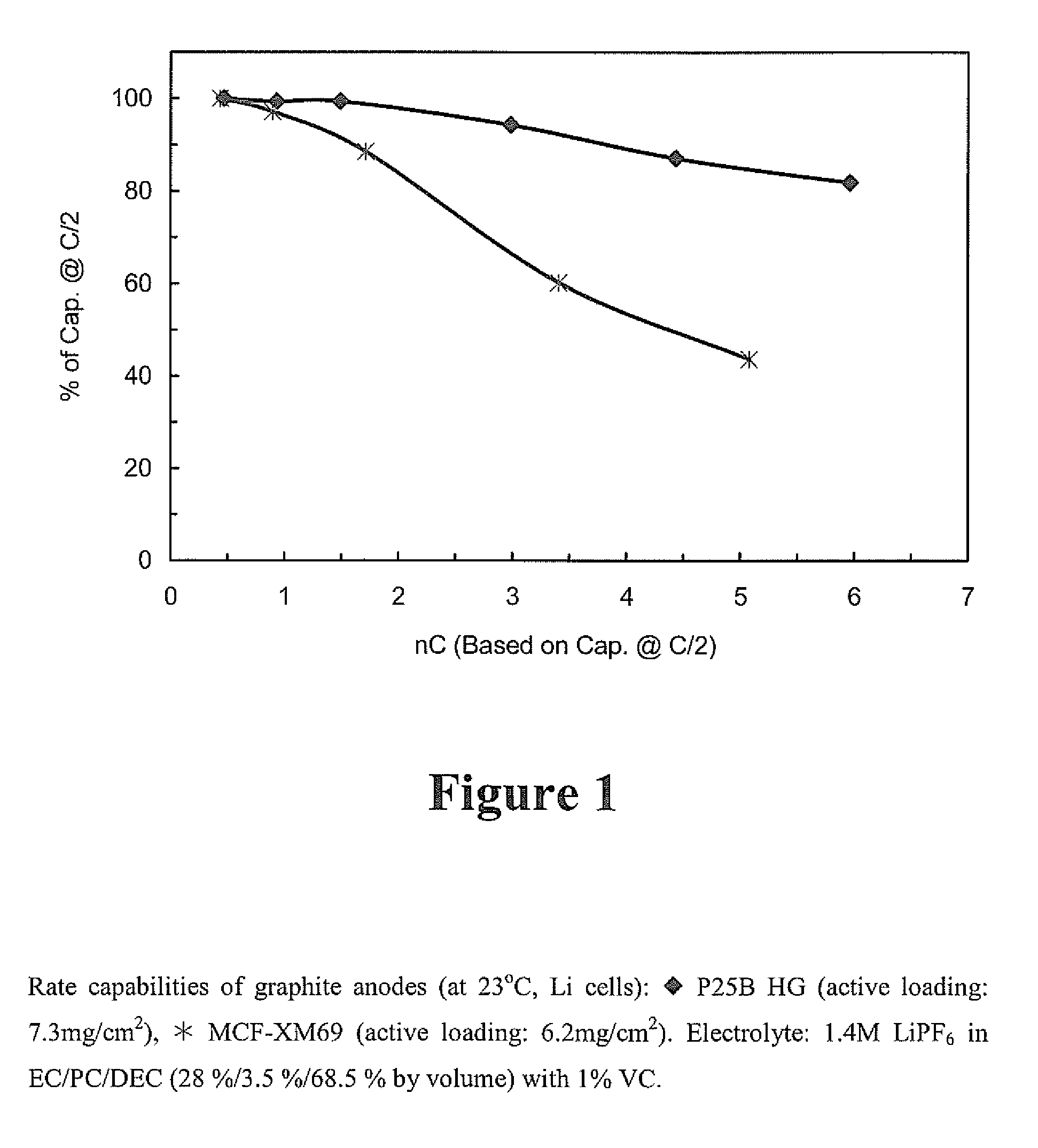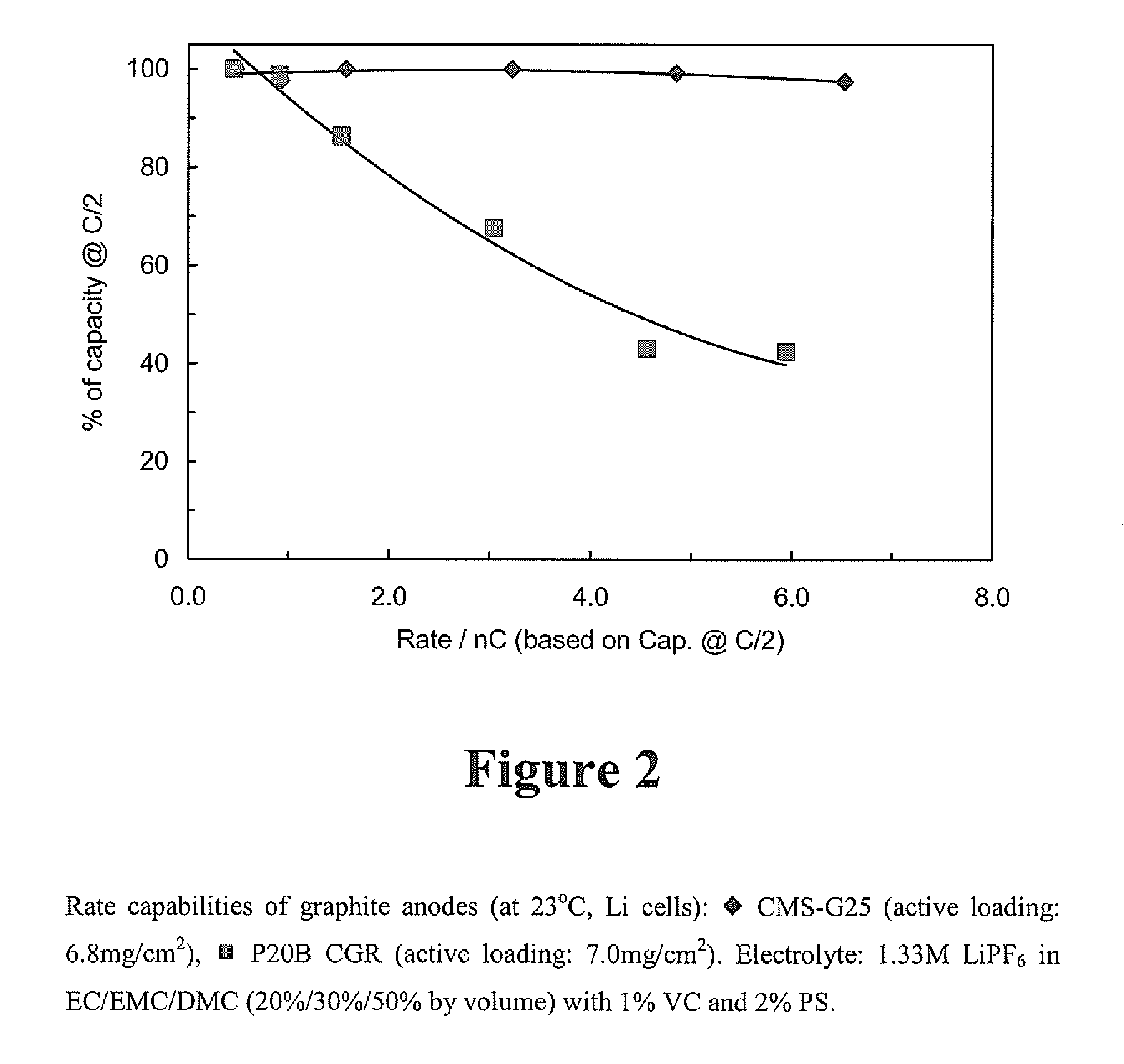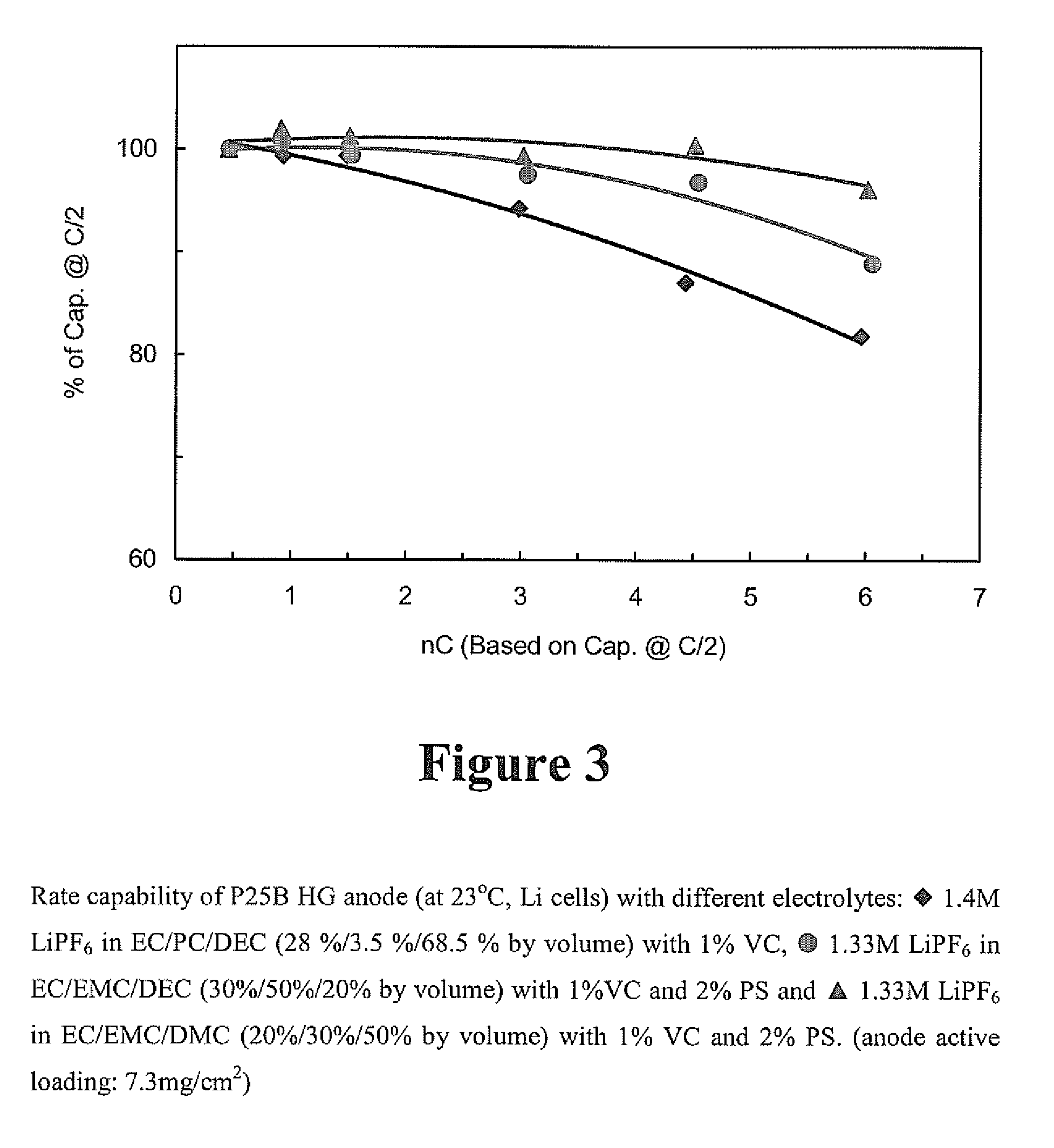Lithium-ion batteries
a technology of lithium-ion batteries and graphite anodes, which is applied in the field of electrolytes and graphite anodes, can solve the problems that not all of them meet the requirement of sustaining such high current, and achieve the effects of improving the rate capability of graphite anodes, superior rate capabilities, and facilitating discharge reactions
- Summary
- Abstract
- Description
- Claims
- Application Information
AI Technical Summary
Benefits of technology
Problems solved by technology
Method used
Image
Examples
example 1
Preparation of Graphite Anodes
[0037]The graphite anodes were prepared by mixing graphite powder and conductive carbon (e.g. Super P from Timcal, VGCF from Showa Denko) in PVDF / NMP solution. The NMP solvent was removed at 120° C. under vacuum after the mix slurry was coated on Cu (copper) foil. The mix ratios used were, for example, 90 wt % graphite: 3 wt % carbon: and 7 wt % PVDF. The loading of active material was 8-6 mgcm−2.
example 2
Preparation of Lithium Vanadium Phosphate Cathodes
[0038]Nasicon vanadium phosphate cathodes [Li3V2(PO4)3] were prepared in a similar procedure to the graphite anodes as described above. An Al (aluminum) foil was used as the substrate and the mix ratios were varied. For the cathode, the ratios were, for example, 85% Li3V2(PO4)3:8 wt. % carbon: and 7% PVDF. The loading of active material was 11-9 mgcm−2.
example 3
[0039]To examine the anode rate capability Li ion cells were constructed by laying a piece of glass fiber as separator between a graphite anode and a Li metal phosphate electrode. The area of the graphite anode was 2.85 cm−2. The cells were discharged (lithiation) at C / 5 to 10 mV and held at this voltage until current drop to 10% of its initial value. The cells were then charged (delithiation) to 2V at different currents so as to measure graphite anode rate capacity.
[0040]Graphite nature effects rate capability. Different types of graphite have different rate capabilities as shown in FIGS. 1 and 2 in which the graphite anodes were charged (delithiation) at different rates. The electrolyte used for the testing in depicted in FIG. 1 was 1.4M LiPF6 in EC / PC / DEC (28% / 3.5% / 68.5% by volume) with 1% VC. The graphite anode made of P25B HG (Nippon Carbon Co. Ltd.) exhibited superior rate capability to the MCF-XM69 anode (mesophase-pitch based carbon fiber.
[0041]The electrolyte used for the t...
PUM
| Property | Measurement | Unit |
|---|---|---|
| wt % | aaaaa | aaaaa |
| voltage | aaaaa | aaaaa |
| area | aaaaa | aaaaa |
Abstract
Description
Claims
Application Information
 Login to View More
Login to View More - R&D
- Intellectual Property
- Life Sciences
- Materials
- Tech Scout
- Unparalleled Data Quality
- Higher Quality Content
- 60% Fewer Hallucinations
Browse by: Latest US Patents, China's latest patents, Technical Efficacy Thesaurus, Application Domain, Technology Topic, Popular Technical Reports.
© 2025 PatSnap. All rights reserved.Legal|Privacy policy|Modern Slavery Act Transparency Statement|Sitemap|About US| Contact US: help@patsnap.com



